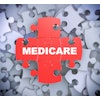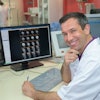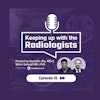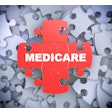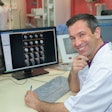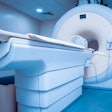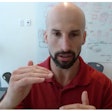Today's radiologists are reading more imaging exams from emergency departments (ED) and fewer from hospital inpatient departments than radiologists 10 years ago, according to a new study published online in the Journal of the American College of Radiology.
Emergency room imaging was the only one of four service locations that saw significant growth during the 10-year study period, according to researchers from Thomas Jefferson University Hospital in Philadelphia. The other three service locations -- hospital outpatient sites, hospital inpatient facilities, and private-office imaging -- all were either flat or saw modest increases (JACR, April 29, 2013).
For the study, Dr. David C. Levin and colleagues gathered data from Medicare's Physician/Supplier Procedure Summary Master Files for 2000 to 2011. The team used specialty codes to identify radiologists and place-of-service codes to identify studies done in hospital outpatient facilities, hospital inpatient facilities, private offices, and emergency departments. The group also calculated relative value unit (RVU) rates per 1,000 Medicare beneficiaries.
Between 2000 and 2006, radiologists' RVU rates per 1,000 Medicare beneficiaries increased at an absolute rate in each of the four venues the researchers identified. But significant shifts occurred in where the work was coming from, as indicated in the table below.
| Changes in percent share of RVU rates | ||
| Location | 2000 share of RVU rate | 2011 share of RVU rate |
| Offices | 16.2% | 19.0% |
| Hospital outpatient | 39.3% | 38.1% |
| Hospital inpatient | 35.3% | 27.2% |
| Emergency department | 8.9% | 15.4% |
| Other | 0.3% | 0.3% |
The authors found it disturbing that twice as much imaging was performed in hospital outpatient sites compared with private offices, due to the fact that hospital-based imaging can be more expensive.
"It would be beneficial to the healthcare system if private-office radiology didn't disappear," he said. "And if policymakers keep ratcheting down payments, it could happen -- the bottom could drop out of private-office imaging. And that wouldn't be good, not only because of the cost differential, but also because of patient access."
Policymakers tend to think of radiology as a specialty that contributes to inflated healthcare costs, Levin said. But the study findings show that the overuse of imaging isn't necessarily due to radiologists -- who tend to work in hospitals -- but to nonradiologists who self-refer.
"We found that 81% of the work radiologists do is in hospitals," he said. "They're not going out in droves and trying to make money by opening up their own imaging centers. Policymakers continue to cut radiology to the bone, but what they should be doing instead is looking at the phenomenon of self-referral."


